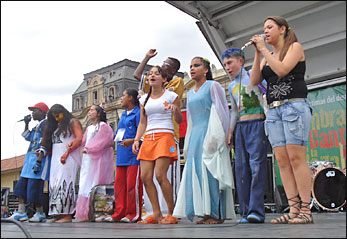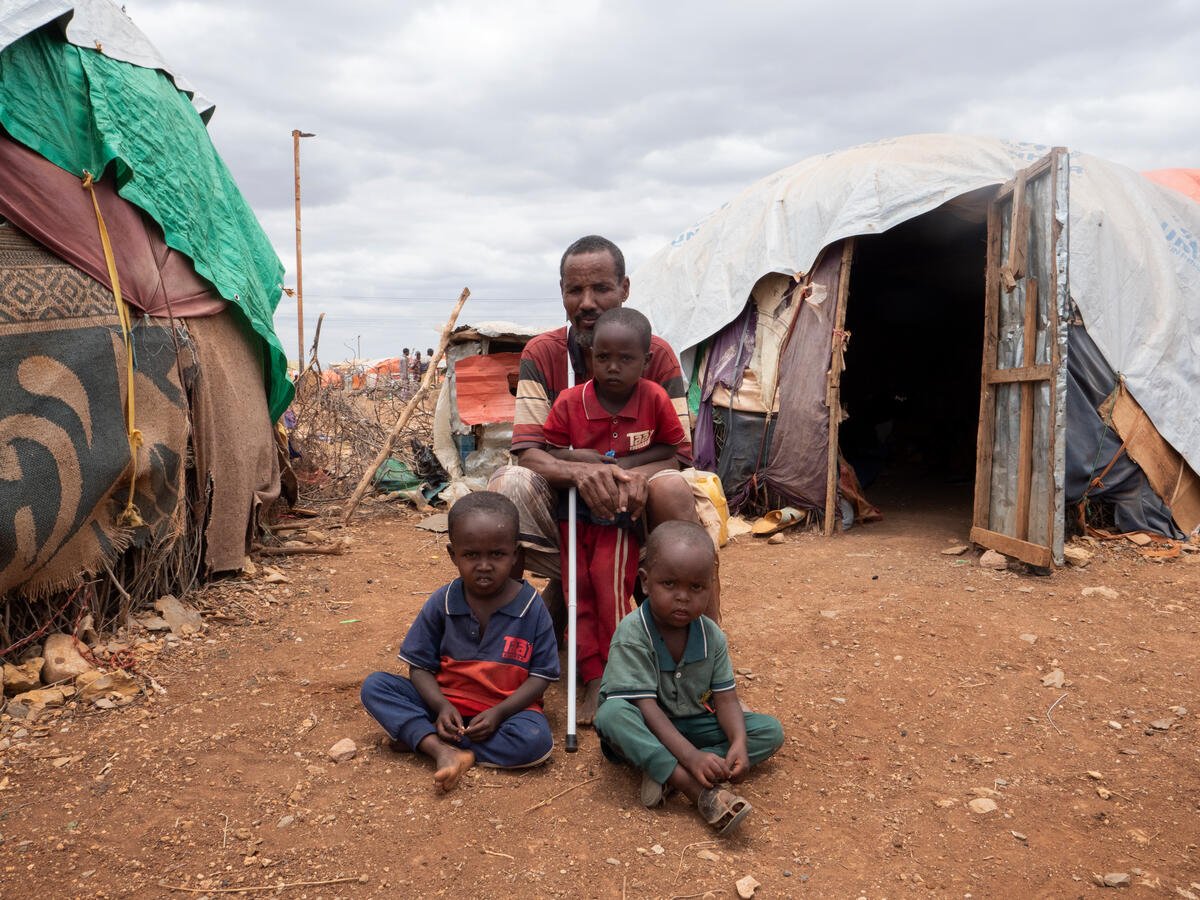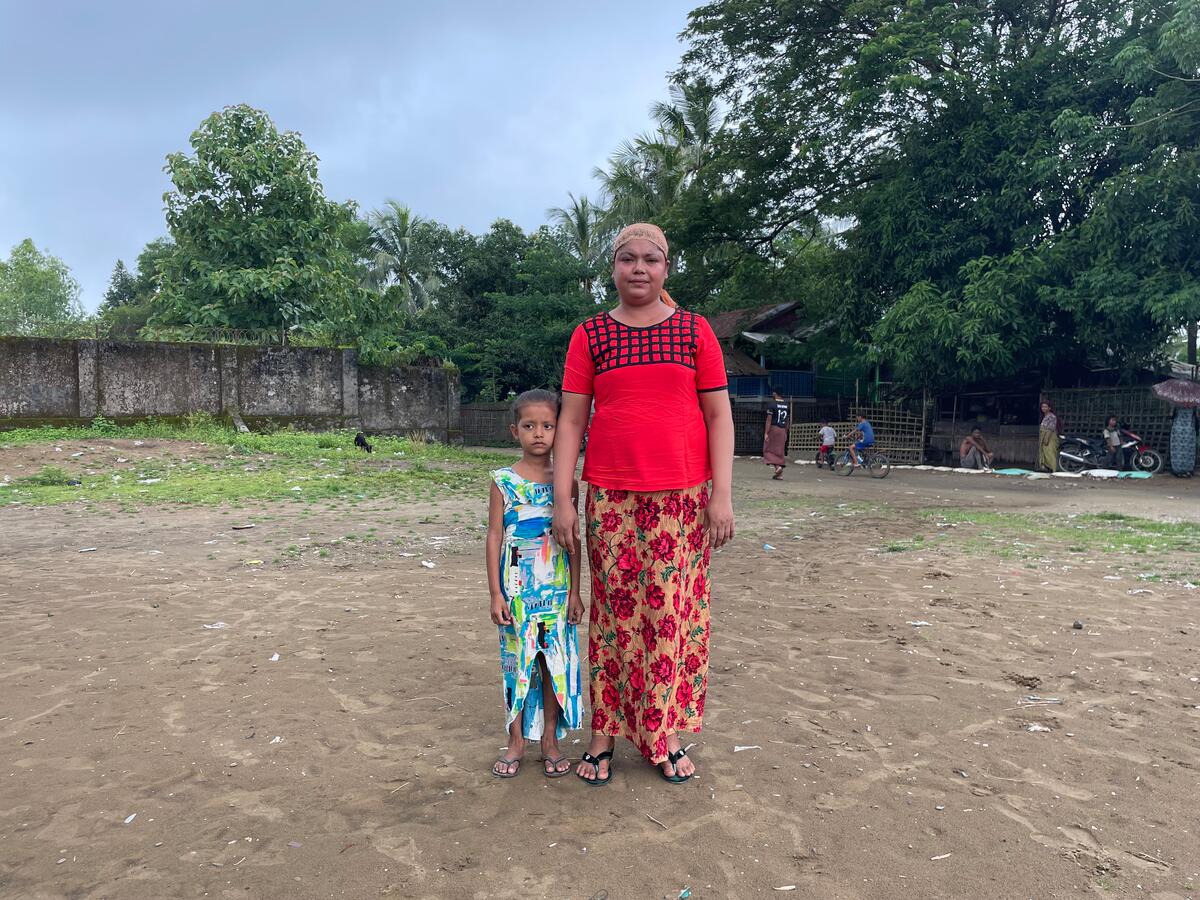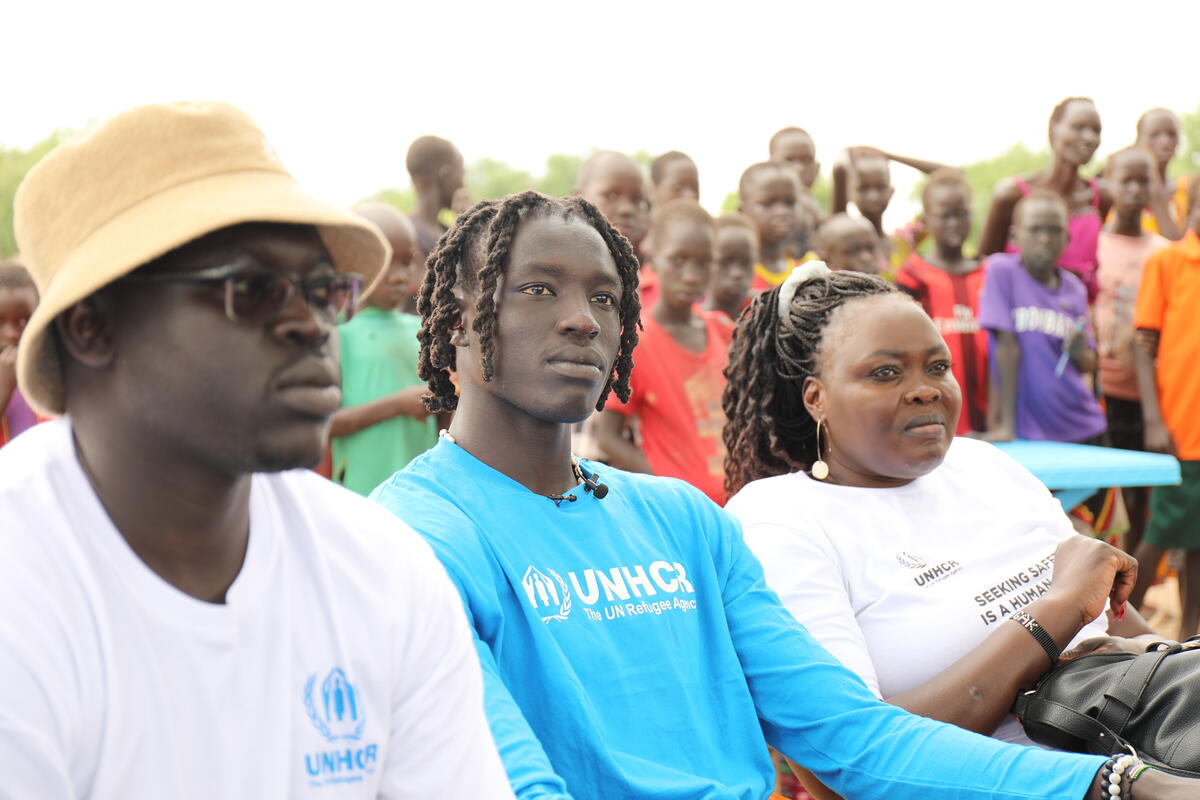Bogota focuses on the thousands displaced from the countryside
Bogota focuses on the thousands displaced from the countryside

Bogota, 31 July (UNHCR) - Bogota's main square was transformed into a country field in homage to Colombia's displaced population, the thousands who have been forced to flee from the land to the cities.
Some 20,000 people came to the Plaza Bolivar last Friday in solidarity with hundreds of displaced people from all over the country, who in the previous days had planted thousands of flowers and plants on land parcels brought to the square for the occasion.
"The exodus takes root in the Square," wrote El Tiempo, the country's most influential newspaper on its front page this weekend, summing up the symbolic impact of the event.
Named after Simón Bolivar, the man who freed Colombia and many other Latin American countries from Spanish rule, the Plaza Bolivar is the historical and political centre of the country, located between Congress, the Court of Justice, the Mayor's Building and not far from the Presidential Palace.
"We wanted to symbolize the impact of what displacement means for the thousands of Colombians who every month have to leave everything behind and from one day to the next wake up in a strange place they do not know," explained Roberto Meier, UNHCR Representative in Colombia. "Colombia's countryside has been displaced to the cities for a long time, now we just wanted to make it obvious for everyone."
The daylong event, called "Siembra y canto en la plaza" (Planting and singing at the Square) was organized by UNHCR and Bogota's Mayor Office with the help of the Colombian Theatre Corporation, national NGOs led by Minga, the International Committee for the Development of the Peoples (CISP, for its Italian acronym) and groups of the displaced population.
It included music, theatre and dance by both professional artists and displaced persons. But above all, it gave displaced persons a rare opportunity to talk with ordinary citizens of this city, where the echoes of the conflict are barely heard, about the life they left behind and the one they have been forced to rebuild here.
"They took my father away one night. I wanted to go talk to them, tell them he was an old man who had done nothing wrong, but they sent word that we should all leave before the end of the day," explains one displaced man from Tolima.
The people around, wary at first, begin to pay more attention. They want to know how he was received in Bogota and how his children are doing now. He explains that it was very difficult at first, no one wanted to take him and his family in. Now they are living in a tiny room at the back of the Plaza Bolivar.
For thousands of displaced people like him, the day was above all a big outside party. The adults talked and listened to the music, while the children ran around dragging behind them at the end of a string the cardboard shoes they were given as toys.
"When I see these shoes, it makes me want to laugh and cry. It's very true, shoes are the one item displaced people need more than anything, because they use them up so fast with all this walking from one place to the next," one father says. His family has been forced to displace three times in the past two years.
"It is important that people realize that we are here not because we wanted to, but because we had to," adds a woman in her fifties who participated in the setting up of the parcels. "We are not a plague, we are workers."
The music never stopped between six in the morning and nine in the evening, with 25 bands and singers representing all of Colombia's musical traditions from Vallenato to Reggaeton giving their time and talents in solidarity with the displaced. Besides the big names of Colombia's folk music, like Jorge Velosa and Toto La Momposina, there were seven groups of young displaced artists brought by UNHCR from regions where its field offices support them.
The event was part of the 2007 Campaign for the Rights of Displaced people in Colombia, a yearlong initiative launched by UNHCR, the Catholic Church and the leading Colombian NGO CODHES that many other organizations have joined.

At the back of the square, the Memory Tree drew a lot of attention with its bows hanging with postcards written by displaced people for the occasion. Some were long, others very simple. "My mummy was killed and then we came to Bogota," one card said. Many others spoke of their dream of peace in Colombia.
One young policeman was visibly moved after reading the cards. "I had no idea all this was going on," he said. "We just don't know, here in the city."
By Marie-Hélène Verney and Gustavo Valdivieso in Bogota, Colombia








